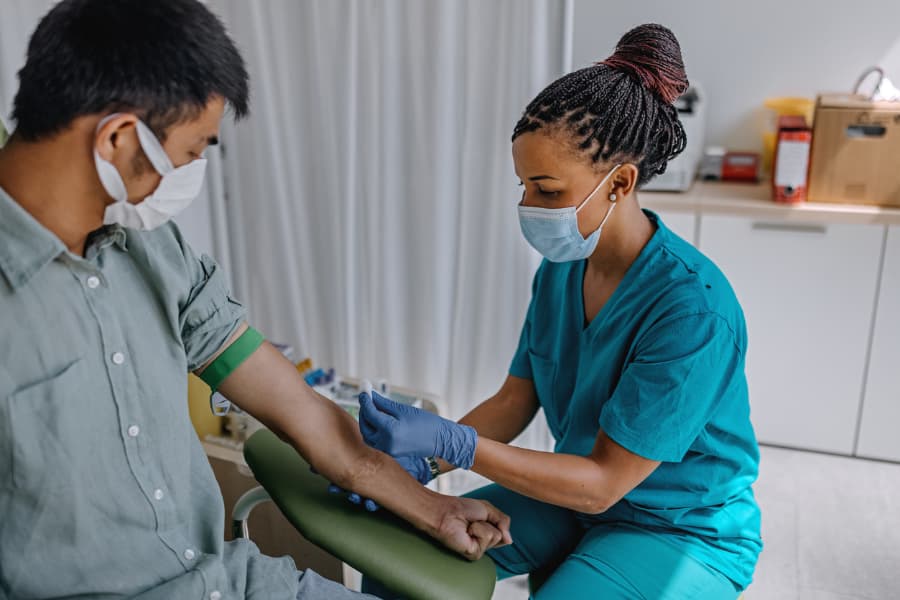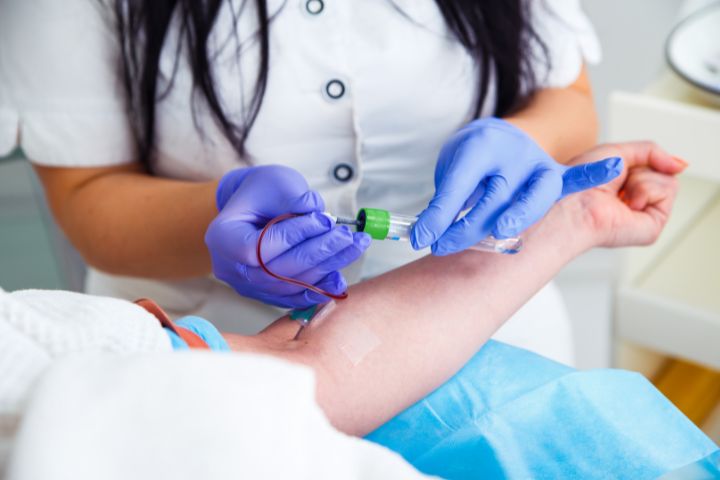Northeast Medical Institute - New Haven Campus Phlebotomy Course & Cna Class for Beginners
Northeast Medical Institute - New Haven Campus Phlebotomy Course & Cna Class for Beginners
Blog Article
What Does Northeast Medical Institute - New Haven Campus Phlebotomy Course & Cna Class Do?
Table of Contents10 Easy Facts About Northeast Medical Institute - New Haven Campus Phlebotomy Course & Cna Class ShownThe 9-Second Trick For Northeast Medical Institute - New Haven Campus Phlebotomy Course & Cna ClassThe Ultimate Guide To Northeast Medical Institute - New Haven Campus Phlebotomy Course & Cna ClassThe smart Trick of Northeast Medical Institute - New Haven Campus Phlebotomy Course & Cna Class That Nobody is Talking AboutRumored Buzz on Northeast Medical Institute - New Haven Campus Phlebotomy Course & Cna ClassNot known Facts About Northeast Medical Institute - New Haven Campus Phlebotomy Course & Cna Class
The usage of such gadgets need to be come with by other infection avoidance and control methods, and training in their use. Not all safety and security gadgets apply to phlebotomy. Prior to choosing a safety-engineered device, users should thoroughly explore readily available tools to establish their proper usage, compatibility with existing phlebotomy techniques, and effectiveness in protecting team and patients (12, 33).For settings with low sources, expense is a driving factor in procurement of safety-engineered tools - CNA Training. Where safety-engineered devices are not available, experienced use a needle and syringe is acceptable. Accidental direct exposure and certain information regarding an event ought to be taped in a register. Assistance solutions need to be advertised for those who undertake unintentional direct exposure.
One of the vital pens of quality of treatment in phlebotomy is the involvement and participation of the client; this is mutually helpful to both the health and wellness worker and the client. Clear info either composed or spoken need to be readily available to every person that undergoes phlebotomy. Annex F offers example text for clarifying the blood-sampling treatment to a patient. In the blood-sampling area for an outpatient division or center, offer a comfy reclining couch with an arm remainder.
Northeast Medical Institute - New Haven Campus Phlebotomy Course & Cna Class Can Be Fun For Anyone
Guarantee that the signs for blood tasting are clearly specified, either in a created protocol or in recorded directions (e.g. in a research laboratory kind). In all times, adhere to the techniques for infection avoidance and control listed in Table 2.2. Infection avoidance and control methods. Accumulate all the devices required for the treatment and area it within safe and simple reach on a tray or trolley, guaranteeing that all the things are plainly noticeable.
Where the individual is adult and aware, comply with the actions outlined listed below. Introduce on your own to the client, and ask the individual to mention their full name. Examine that the laboratory form matches the patient's identification (i.e. match the client's information with the laboratory type, to make sure precise recognition). Ask whether the patent has allergies, phobias or has ever before fainted during previous shots or blood draws.
Make the individual comfy in a supine setting (when possible). Location a tidy paper or towel under the person's arm. Discuss the test to be done (see Annex F) and acquire spoken consent. The patient has a right to refuse a test any time before the blood sampling, so it is very important to ensure that the client has understood the treatment.
The Buzz on Northeast Medical Institute - New Haven Campus Phlebotomy Course & Cna Class
Extend the individual's arm and inspect the antecubital fossa or forearm. Situate a blood vessel of an excellent dimension that is noticeable, straight and clear.
DO NOT insert the needle where veins are diverting, because this enhances the opportunity of a haematoma. Finding the capillary will certainly aid in determining the appropriate dimension of needle.
Specimens from central lines carry a danger of contamination or incorrect laboratory examination results. It is acceptable, yet not suitable, to draw blood samplings when initial presenting an in-dwelling venous tool, prior to connecting the cannula to the intravenous liquids.
Rumored Buzz on Northeast Medical Institute - New Haven Campus Phlebotomy Course & Cna Class
Allow the area to completely dry. Failure to allow enough call time boosts the threat of contamination. DO NOT touch the cleaned site; specifically, DO NOT place a finger over the vein to assist the shaft of the revealed needle. It the website is touched, repeat the sanitation. Perform venepuncture as complies with.
Ask the person to form a fist so the veins are extra noticeable. Enter the vein swiftly at a 30 degree angle or much less, and remain to introduce the needle along the vein at the easiest angle of access - Phlebotomy Classes. When adequate blood has been collected, release the tourniquet prior to taking out the needle
Not known Factual Statements About Northeast Medical Institute - New Haven Campus Phlebotomy Course & Cna Class
Take out the needle carefully and apply gentle stress to the site with a tidy gauze or dry cotton-wool round. Ask the patient to hold the gauze or cotton wool in area, with the arm expanded and elevated. Ask the client NOT to flex the arm, because doing so creates a haematoma.

The Only Guide for Northeast Medical Institute - New Haven Campus Phlebotomy Course & Cna Class
Do not press the syringe plunger because additional pressure raises the danger of haemolysis. Where possible, maintain televisions in a rack and relocate the shelf towards you. Inject downwards right into the ideal coloured stopper. DO NOT get rid of the navigate to these guys stopper due to the fact that it will certainly release the vacuum cleaner. If the example tube does not have a rubber stopper, inject very gradually into the tube as decreasing the stress and velocity utilized to transfer the specimen minimizes the threat of haemolysis.

Report this page